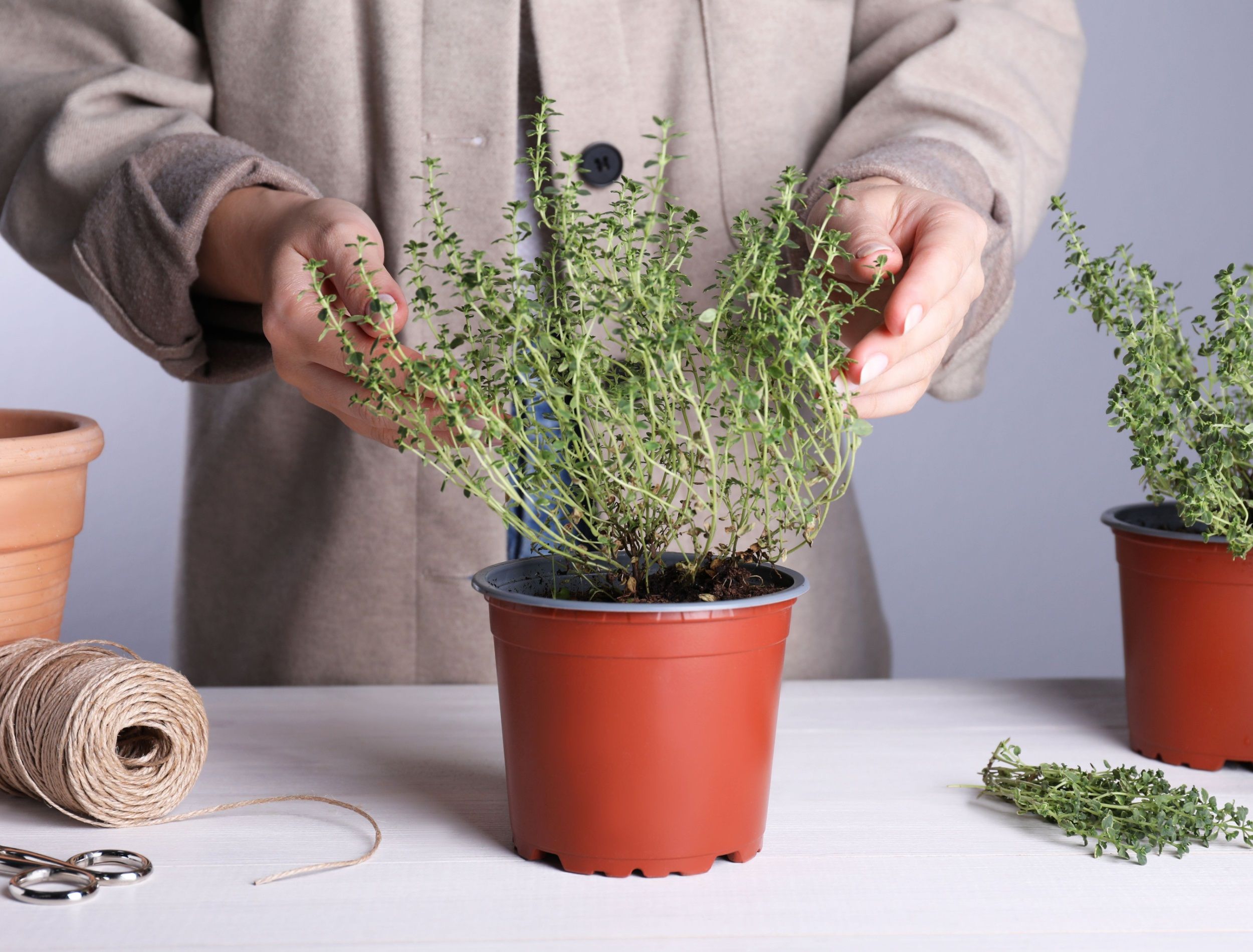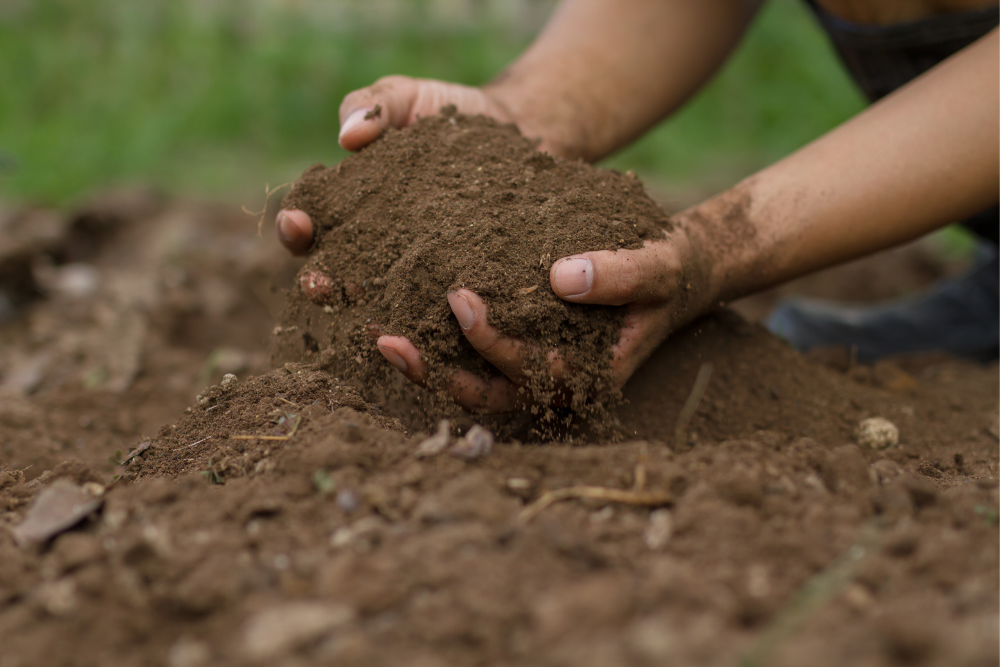Thyme is a versatile and fragrant herb used for cooking and medicinal purposes. Not only does it add a unique flavor to dishes, but it also has numerous health benefits, making it a popular choice for herb gardens.
Discover the basics of growing thyme to know how to plant and care for it. Whether you're an experienced gardener or just starting, find the information you need to successfully cultivate and enjoy this beautiful and flavorful herb in your garden.
Materials Needed
Image credits: Towfiqu barbhuiya via Pexels
To grow and care for thyme, you will need the following materials:
- Thyme cuttings
- Pot or garden bed
- Watering can
- Compost
- Hoe
- Pruning shears
A Step-by-Step Guide on How to Grow Thyme
Step one: Choose a Spot
Image credits: joe_potato via Canva
You can grow thyme in the ground or a container, but it thrives in warm, sunny conditions. Therefore, plant it in an area that receives at least 6 hours of direct sunlight each day, as it will not grow well in a shady location. If you live in a hot, dry climate, then provide it with some afternoon shade.
Step two: Prepare the Soil
Thyme prefers well-draining, sandy loam soil with a pH between 6.0 and 7.5. That's why you should always test your soil before planting it. To improve its quality, you can fertilize it with organic matter, like compost, in early spring.
Step three: Start Planting
Image credits: hamik via Canva
You can grow thyme from seeds, but it's more complicated due to slow and irregular germination. Instead, start cultivating it from cuttings or store-bought plants indoors about ten weeks before the last spring frost.
When the risk of frost has reduced, and the soil temperature has risen to a minimum of 70 degrees Fahrenheit, it's the ideal moment to plant your cuttings in the ground. Do it by spacing them 9 inches apart, roughly two to three weeks before the final spring frost.
For the best results, plant your thyme near cabbage or tomatoes in the ground, next to rosemary when planted in the container. The plants are great companions for your thyme!
How to Care for Your Thyme
Image credits: Eduardo Goricev's images via Canva
Watering
Thyme is native to the Mediterranean region, making it a tough and resilient plant that can withstand dry spells. You don't have to be a green thumb to keep it happy. A periodic watering every 10 to 15 days is enough to make thyme thrive. Just be sure to check the soil regularly and water it when it starts to dry.
Mulching
Winter weather can be tough on delicate herbs, but thyme is a hardy plant equipped to handle the cold. To give it the best chance for survival, consider applying a layer of mulch to help it stand the cold. Aim for 1 to 2 inches of mulch to provide insulation; It will keep the roots warm and protect them against frost damage.
When selecting the type of mulch, turn to limestone gravel. Its reflective properties can help maximize sunlight exposure. Plus, its porous structure promotes excellent drainage, keeping the soil around thyme's roots dry and healthy.
Weeding
While thyme is a resilient herb, it can still be overrun by weeds that compete for water, nutrients, and sunlight. To prevent this, keep the area around thyme free from weeds by hand-pulling or using a hoe.
If you choose to hand-pull, get the entire root of the weed, as even small pieces left in the soil can re-grow into new plants. I the process, be careful not to damage the roots, as this can weaken the plant and make it more susceptible to disease.
Protecting from Pests and Diseases
Spider mites can be a problem for thyme, especially in dry, dusty conditions or windy areas with exposed soil. To guard against these pesky invaders, provide proper drainage and air circulation, and prune your plants. It will help keep them healthy and less susceptible to infestation. In humid climates, root rot and various fungi can be a concern. To avoid these diseases, provide your thyme plants with plenty of space.
Pruning
Pruning encourages bushy growth, prevents the plant from becoming leggy, and helps to keep its compact shape. During its first year, keep pruning light to help it establish itself and make it through the winter. After that, feel free to give it a little haircut as needed! Although, it's best to do the haul of your pruning in summer.
To prune thyme, pinch back the tips of the stems with your fingers or a pair of scissors. It will promote the growth of new side shoots, increasing the overall density of the plant. Also, remove any yellow or brown leaves, as they can indicate disease or stress.
Thyme to Grow Your Own Herbs
Growing and caring for thyme is a rewarding process. With its fragrant leaves and delicate flowers, this hardy herb is a staple in many gardens and kitchens. By providing well-draining soil, full sun, and regular watering and weeding, thyme will thrive and flourish. Pruning can also help keep the plant looking its best, promoting new growth and maintaining its compact shape. Plus, you'll always have fresh herbs to cook with.
Whether used fresh or dried, thyme adds flavor and aroma to any dish. With a little care and attention, you can enjoy this Mediterranean herb in your garden for years to come.
Do you know other tips for growing or caring for thyme? Comment below, and as always, please share!






